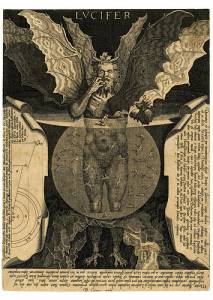
Image by Flikr user <a href=" http://flickr.com/photos/kintzertorium/3128793404/in/photostream/ target="_blank">Kintzertorium</a>
From the New York Times comes news that the Roman Catholic Church is allowing
indulgences again. The revelation compelled the Times to write this improbable paragraph:
There are partial indulgences, which reduce purgatorial time by a
certain number of days or years, and plenary indulgences, which eliminate all of it, until another sin is committed. You can get one for yourself, or for someone who is dead. You cannot buy one — the church outlawed the sale of indulgences in 1567 — but charitable contributions, combined with other acts, can help you earn one. There
is a limit of one plenary indulgence per sinner per day.
Indulgences are an admittedly shadowy subject for those of us with a limited knowledge of Catholic theology. Even many Catholics often don’t know what’s up with them. But allow me, who has always found humor in the Middle Ages, to translate: Give money on earth and then spend less time in purgatory when you die.
Leaving aside the far-fetched notion that your priest’s pocketbook has any sway over the amount of time you actually spend in purgatory, indulgences carry some heavy historical baggage. The Middle Ages witnessed the growth of extensive indulgence abuses. People forged documents certifying that indulgences had been granted. Later, middlemen extracted a fee from the faithful to to help them rack up more indulgences. In a practice that was obviously unfair to the poor, rich parishioners could simply give the church money in exchange for a fast track to heaven. Famously, Saint Peter’s Basilica was paid for with the loot.
It got so bad that Pope
Pius V prohibited indulgences involving financial transactions, and even complimentary indulgences (which were granted for good works) declined in popularity. But today, as part of the Vatican’s effort to restore many old-fashioned traditions, certain Dioceses have announced that indulgences are back and can be earned though charitable contributions. No word yet on which
charities count.















